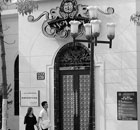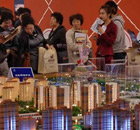Top Biz News
Backgrounder: China's economic restructuring
(Xinhua)
Updated: 2010-02-27 18:06
 |
Large Medium Small |
BEIJING: Chinese Premier Wen Jiabao told netizens Saturday that to secure a steady and fast economic development, the most important thing is to well treat the relationship among economic restructuring, the transformation of development pattern and inflation control. Following are some facts about the country's economic restructuring:
China has pledged more efforts to accelerate economic restructuring this year to make its growth more sustainable, after its economy posted a strong recovery of 8.7 percent growth in 2009, exceeding its target of 8 percent.
Growth of the world's third largest economy slowed to 6.1 percent from a year earlier in the first quarter of last year, led by a slump in exports caused by the global financial crisis starting in 2008.
The Political Bureau of the Communist Party of China Central Committee issued a statement Monday which vowed that the government would accelerate economic restructuring and push forward substantive progress in changing the mode of economic development this year, while continuing the proactive fiscal policy and moderately loose monetary policy.
The nation's top leaders have reiterated the need for economic restructuring, which analysts said, would be the focus of this year's macro policy.
Chinese President Hu Jintao said on Feb. 3 that "on the surface, the global financial crisis impacted on the speed of China's economic growth, but in essence it was the economic growth pattern that was worst hit."
"The transformation of economic development mode brooks no delay based on a comprehensive judgement on international and domestic economic situation," Hu said.
Chinese Premier Wen Jiabao said on Feb. 4 that development of science, education and culture was key to the transformation of China's economic growth mode and its sustainable development.
He urged traditional industries should be upgraded with the latest technologies to enhance their efficiency and competitiveness.
On Feb. 5, Chinese Vice Premier Li Keqiang said China had entered a key period of time when adjusting economic structure was the only approach to advance the country's sustainable development.
To achieve the end, China should further promote domestic consumption, he said, emphasizing the important roles that employment and the social security net play in fuelling domestic demand.
On Feb. 21, Li Yizhong, Minister of Industry and Information Technology, noted China's economic growth should shift its dependence to consumption, investment and exports from mainly on investment and export.
Scientific advancement, labor quality and management innovation should replace resource investment to sustain economic growth, he said.
To prop up growth, Chinese government has rolled out a raft of stimulus packages. Some aimed to push forward economic restructuring while striving to ensure growth.
The following are measures and policies unveiled to expand domestic demand and offset falling exports.
-- The State Council, or the Cabinet, announced on Jan. 14, 2009 to halve purchase tax on cars under 1.6 liters to 5 percent from Jan. 20 to Dec. 31 last year. The government decided on Dec. 10 to retain the policy for the whole year of 2010, with purchase tax raised to 7.5 percent.
-- The government expanded the subsidy program for rural purchase of home appliance throughout the country in February 2009, after the program was launched in three provinces in 2007.
-- In March, 2009, Chinese government detailed a plan to give a subsidy equal to 10 percent of the purchase price to rural residents who buy a new minivan or light truck, effective from Mar. 1 to Dec. 31, 2009. The policy was extended for one more year in 2010, the government announced in December 2009.
-- The detailed subsidy plan also said that from Feb. 1, 2009 to Jan. 31 in 2013, farmers who buy motorcycles would get 13 percent of the purchase price back, with ceiling subsidies of 650 yuan.
-- China started a home appliance replacement plan on June 1, 2009, which allocated 2 billion yuan to encourage home appliance upgrades in nine pilot cities, including Beijing, Tianjin, Shanghai and Changsha.
Buyers would receive a subsidy of equivalent to 10 percent of the retail price of new appliances including TVs, refrigerators, washing machines, air conditioners and computers.
-- The government announced on Jan. 31, 2010 to offer subsidies to farmers to increase output of grain, potato, highland barley and peanut as well as to purchase agricultural machinery and construction materials.















